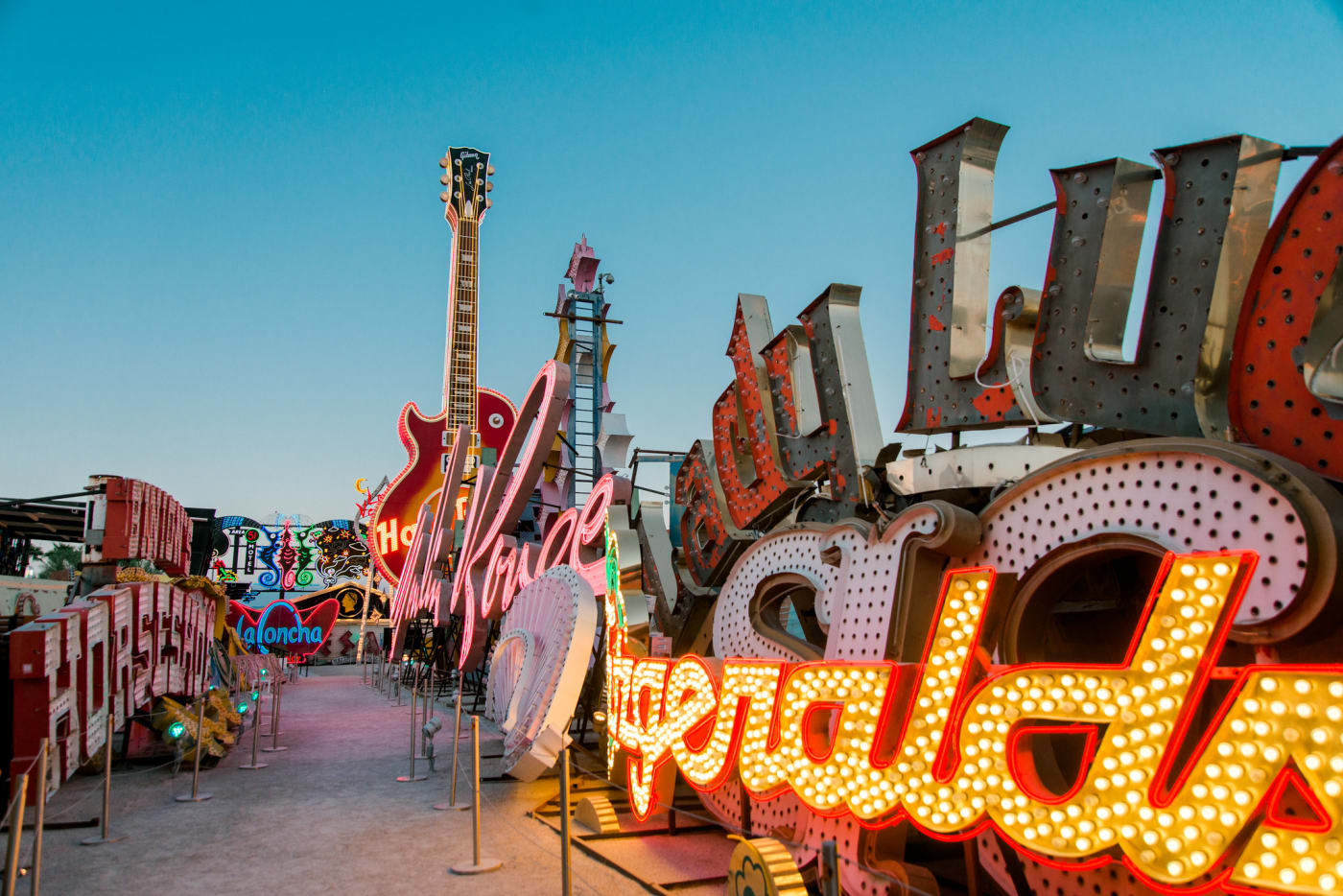Flamingo Las Vegas Hotel & Casino

The Flamingo Las Vegas Hotel & Casino signage is located to the left of the Sahara Las Vegas Hotel & Casino signage.
The Flamingo Las Vegas Hotel & Casino opened in December 1946 as the third resort on the Strip and was among the first crop of properties to disregard the Old West theme popular in Las Vegas until that point, opting for a look of simple sophistication. Originally, the profile of the building was long and low, with sharp, modern lines mimicking the Streamline Moderne aesthetics of Miami Beach, complete with greenery evoking a tropical oasis. Erected in front of the property was a thin metal slab with the words “Hotel Flamingo” displayed vertically, adorned with the neon outline of a flamingo. Essentially, the property gave the appearance of an atypical, uncharacteristically lush roadside motel.
The Flamingo is one of the oldest still-operational properties on the Strip, and it has undergone numerous renovations throughout the years. From 1953 to 1967, the property featured an 80-foot tall “Champagne Tower,” considered to be the first “spectacular” sign on the Strip. Designed by the architectural firm of Pereira and Luckman and manufactured by the YESCO (Young Electric Sign Company), the signage featured neon-illuminated circles simulating fizzing bubbles in a champagne glass. The Hilton franchise acquired the property in the 1970s, and an extensive remodel followed. The company sponsored an international call for entries, seeking design submissions for the Flamingo’s new signage. The winning proposal was conceived by Raul Rodriguez, an award-winning designer of more than 500 Rose Bowl Parade floats. Rodriguez efficiently translated his skills in float design to sign design, creating a flamboyant corner display of pink and orange neon plumage, composed of intricate feather elements curling upward and out, supported by a telescopic, mirror-covered column.
The Flamingo has inspired Las Vegas sign architects to produce some of their most flamboyant and colorful work. Most of the concepts never materialized, but their inclusion here provides a rare look into the invention and individuality often exhibited by those who imagine these stunning signs.










